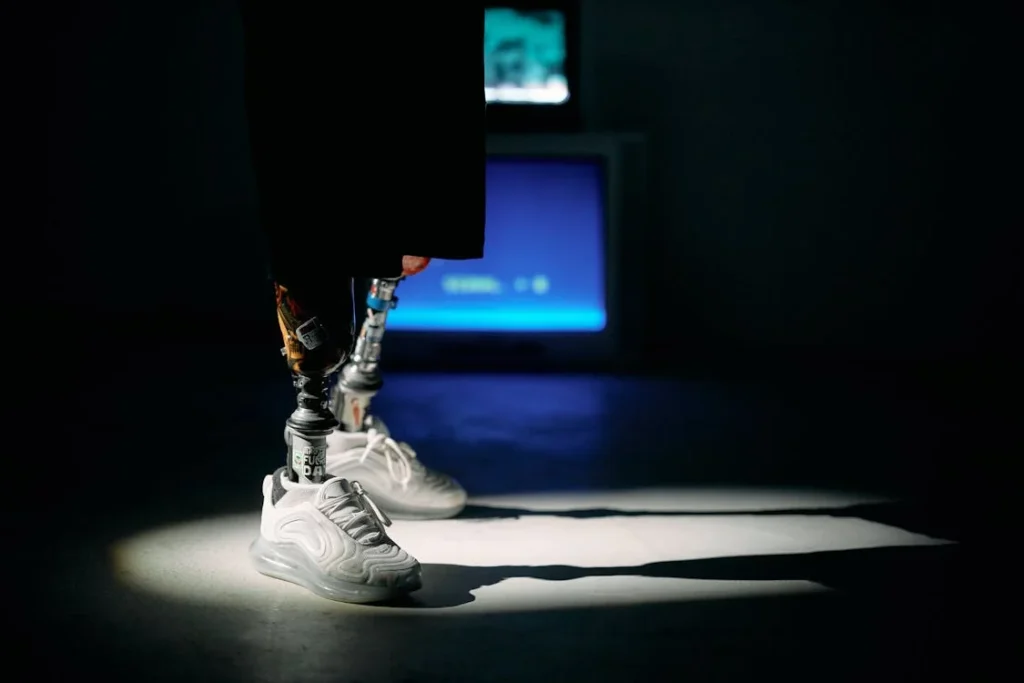Getting back to daily life after an amputation can feel overwhelming. You may wonder how long it will take to return to work or if you’ll ever feel like yourself again. What many don’t realize is that one of the most important steps in this journey is how soon you get your first prosthesis. An early fit — when done at the right time — can change everything. At Robobionics, we’ve seen how it helps people return to work quicker, regain independence faster, and rebuild their confidence with strength. This article explores how and why that happens, and how you can make it work for you.
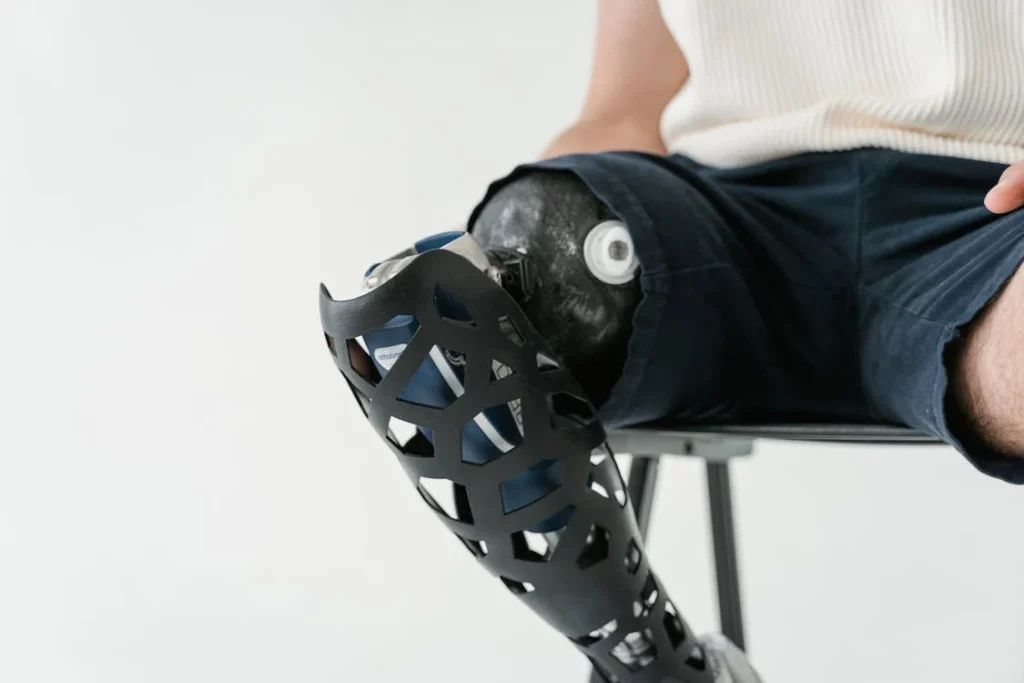
How the Timing of Your First Prosthesis Shapes Recovery
Why Early Fitting Makes a Bigger Difference Than You Think
When someone loses a limb, the body goes through a major change. Muscles no longer work the same way. Balance becomes difficult.
The shape of the limb left behind — the residual limb — starts changing quickly. If nothing is done, this can lead to weaker muscles, joint stiffness, and a longer, more painful recovery.
Now, imagine this: the body is healing, and at the same time, it’s also learning to walk or move with a prosthesis. That’s the power of early fitting. You’re not waiting for the “perfect” time. You’re creating it.
When a prosthesis is introduced early — safely and under medical guidance — your brain begins to adapt. Your muscles get back to work.
And your daily routine doesn’t feel so far away anymore. It’s not about rushing. It’s about not wasting the opportunity your body gives you in the early weeks after amputation.
The longer you wait, the more your muscles forget. Your balance worsens. Your confidence dips. But with early fitting, you stay in motion. And motion leads to motivation.
The First Fit Is a Bridge — Not the Final Step
People often think that the first prosthesis they get is the one they’ll use forever. That’s not true. Your first prosthetic is often a temporary device.
Its job is to help your body and mind adjust. It allows your limb to become stronger, helps reduce swelling, and teaches your brain how to move again with a new part.
Because your limb will continue changing during the first few months, this early prosthetic is adjustable. It’s not about perfection. It’s about participation — in therapy, in daily routines, in life.
The earlier this step begins, the faster you can move to a permanent prosthesis that’s tailored to your needs — whether for office work, fieldwork, or simply managing your home life with ease.
Work Readiness Begins at Home and in Rehab
How a Prosthesis Rebuilds Independence
Returning to work doesn’t begin with writing a resume or asking for a job. It starts with getting out of bed, dressing yourself, preparing meals, and managing your time without help. Early prosthetic fitting plays a huge role in this.
When you start using a prosthesis early, even for basic things like standing in the kitchen or walking to the bathroom, you start winning small battles.
These victories build strength and reduce the need for a full-time caregiver. You start to manage your own routine. You regain privacy. And you feel less dependent — physically and emotionally.
All these small steps create a strong base for bigger goals, like returning to your job or starting a new one. The faster you get moving, the easier it is to plan your work life — not around your limitations, but around your new abilities.
At Robobionics, we’ve seen people begin light-duty work within two to three months of early prosthetic use, depending on the level of amputation and therapy engagement. That timeline becomes longer — sometimes double — when prosthetic fitting is delayed.
Why Physical Therapy and Prosthesis Go Hand-in-Hand
It’s not just the prosthesis alone that changes the game. It’s how it works with therapy. Your prosthesis is only as good as the training you do with it. That’s why early fitting is combined with guided physical therapy.
Therapists teach you how to walk, climb stairs, shift weight, and prevent injuries. They monitor your limb for skin problems, and they adjust your movement style to protect your joints. More importantly, they help you regain confidence.
Therapy with a prosthesis is very different from therapy without one. Without it, you may only train one side of the body, leading to imbalance.
But once your prosthesis is in place, your body learns to move as a unit again. This balance is essential for any job — whether you work in an office, a factory, or a market stall.
So early fitting is not just about walking. It’s about preparing your whole body to take part in life again — safely and efficiently.
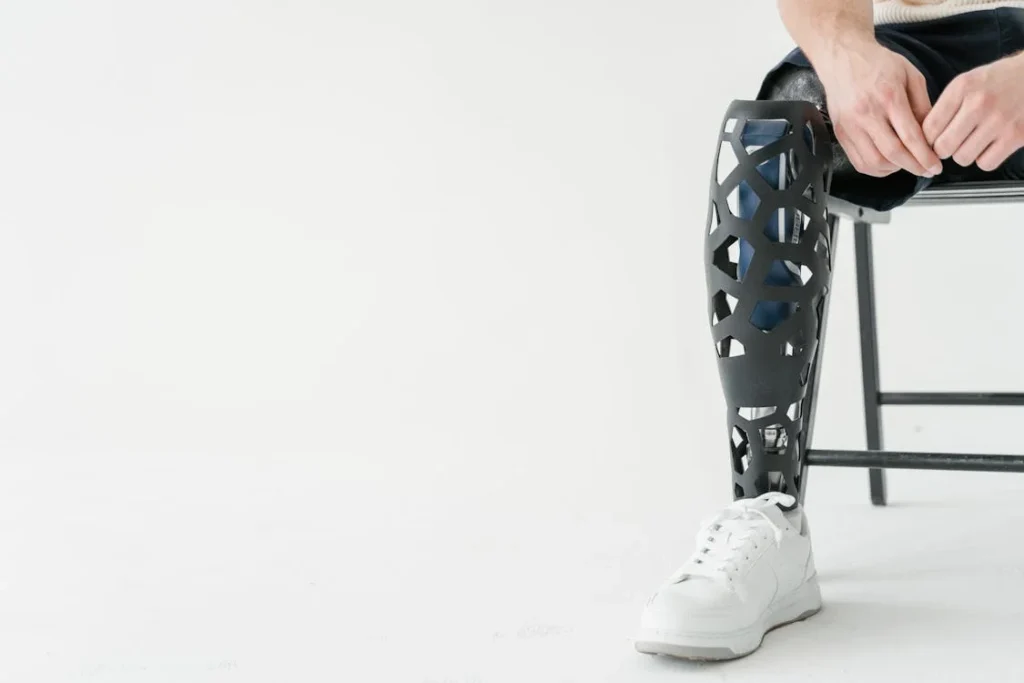
What Return to Work Really Looks Like After Early Fitting
From Basic Tasks to Complex Roles — One Step at a Time
Many people believe they have to be 100% healed before returning to work. But the truth is, with proper planning and support, you can start much earlier than expected. Especially when your prosthetic journey starts early.
Let’s say you begin with a temporary prosthesis within the first two months. By the third month, you may already be walking with confidence.
You’ve practiced standing for long periods. You’ve trained on stairs and uneven ground. You’ve learned how to sit and rise without losing balance. You’ve even managed a few outings.
All of this means you’re now able to handle job tasks like:
- Moving around the workplace without support
- Sitting and standing for extended hours
- Carrying light items
- Taking public transport or driving short distances
Even if your job involves heavier tasks, an early prosthetic fit gives you a head start. You can start part-time. You can request modified duties. You can prove your ability — because you’ve already spent weeks preparing for this moment.
People who delay prosthetic fitting often face greater fear at this stage. They feel out of shape, unprepared, or too reliant on others. That hesitation can keep them out of work longer — even when the physical ability is there.
But early fitting changes the mindset. It gives you momentum. It tells your brain: “I’m already doing this.”
The Emotional Boost That Helps You Reintegrate
Work is more than income. It’s identity. It gives structure to your day. It connects you to society. It gives you a reason to get up in the morning and goals to look forward to.
When people are fitted early and start walking, something shifts. Their face changes. They speak with more energy. They stop talking only about the past, and start planning for the future.
That confidence is noticed by employers, family members, and the community. It opens doors — not just for jobs, but for social events, gatherings, hobbies, and even travel. It marks the real return to life.
This emotional transformation can’t be faked. It grows naturally when your body is moving again. That’s the quiet power of early prosthetic fitting — it doesn’t just change how you walk. It changes how you see yourself.
How Early Return to Work Affects Your Finances and Future
Shorter Time Away Means Less Financial Stress
In India, many families rely on a single earning member. When that person experiences an amputation, the loss isn’t just physical — it’s financial. The longer the recovery, the more the bills pile up, and the deeper the family sinks into debt or worry.
An early prosthetic fit gives you the power to return to earning sooner. You can rejoin your job — even in a limited role — before your savings dry up. You can support your family again, and feel proud of contributing.
This is especially important for small business owners, freelancers, and informal workers. Unlike salaried employees, they often don’t have the luxury of paid leave.
Every day off work hits hard. But with early mobility, they don’t have to wait six or eight months to resume. Some get back to shopkeeping or light fieldwork within just three or four months.
You also start saving on long-term rehabilitation costs. A body that stays active heals better. It avoids complications like joint stiffness, chronic pain, and long-term dependency on medications or support staff. So not only do you return to earning faster — you also spend less on healthcare in the years to come.
Long-Term Career Growth Is Easier When You Return Sooner
The longer you stay away from work, the harder it is to return at the same level. Skill fades. Opportunities pass. Confidence dips. But when you return within months of your surgery — even if it’s part-time — you stay connected. You keep learning. You show your employer that you’re adaptable, reliable, and resilient.
Early prosthetic use helps you maintain momentum in your career. You don’t get “left behind.” You stay in the loop. That’s true whether you’re in IT, teaching, government service, or even manual work. A small delay early on can grow into a big gap. But early return closes that gap before it widens.
In a world that moves fast, staying active protects your place — and opens new ones.
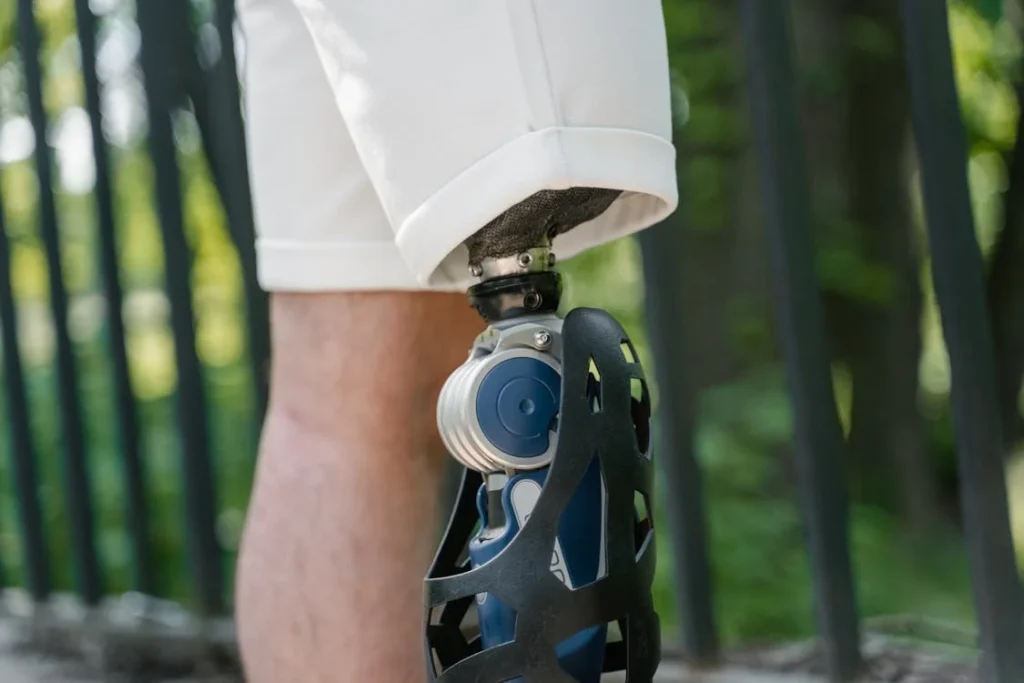
Better Prosthetic Fit, Better Long-Term Mobility
The Body Adapts Faster When It Learns Early
There’s a window of time after amputation when your brain is highly flexible. It’s learning how to adjust your balance, use new muscles, and respond to your new body. This is called neuroplasticity — and it peaks in the early months after surgery.
If you begin using a prosthesis during this window, your brain learns faster. You build stronger habits. You develop smoother walking patterns. You avoid bad posture, overcompensation, and long-term pain.
But if you wait too long, your body finds other ways to adapt — often in harmful ways. You may rely too much on your healthy leg, strain your lower back, or shift your hips unnaturally. These changes can lead to pain, fatigue, and joint damage over time.
Early fitting allows your body to adapt the right way — with balance, rhythm, and fluidity. That means fewer problems in the long run and more confidence in movement.
You Use the Prosthesis More — and Stick With It
Patients who get their prosthesis early tend to wear it longer and use it more during the day. Why? Because they’re used to it. Their skin adjusts better. Their limb fits better. Their mind sees it as a part of daily life, not an afterthought.
Late-fitting patients often struggle. Their limb may have changed shape too much. They may have lost muscle tone. The prosthesis may feel foreign, heavy, or even painful. And over time, many stop using it — even if it’s well made.
This drop-off is avoidable. When the prosthesis becomes part of your routine early on, it stays with you. You trust it. You lean on it — not because you have to, but because it works for you.
That long-term usage is what leads to long-term results.
Stories That Show the Power of Early Fitting
Nisha’s Story: A Working Mother Returns to Teaching
Nisha, a 37-year-old schoolteacher from Lucknow, lost her leg below the knee in a road accident. She was the sole earner for her family of four.
During her hospital stay, she asked her doctor about prosthetics. He said it would take time. But she insisted — respectfully — that she wanted to begin planning early.
Through Robobionics, she was fitted with a temporary prosthesis in her sixth week post-surgery. With daily therapy and home exercises, she returned to the classroom part-time in just 11 weeks.
By the end of four months, she was back full-time — standing, writing on the board, and walking with confidence.
What stood out wasn’t just her mobility. It was her mindset. She didn’t let the injury define her. She used her early fit as a tool to return not just to work — but to life.
Ramesh’s Story: From Farmer to Business Owner
Ramesh, a farmer in rural Tamil Nadu, had a below-knee amputation due to diabetes. He couldn’t afford to be off work for long. Through a local clinic connected with Robobionics, he got a prosthetic consultation in the second month after surgery.
He began training with a temporary limb in his third month and resumed working on his land — slowly at first. By month five, he’d converted part of his field into a poultry business that required less physical labor.
His early mobility kept his confidence alive and helped him adapt his work life around his strengths. Today, he earns more than before — and mentors others in his village who have faced similar challenges.
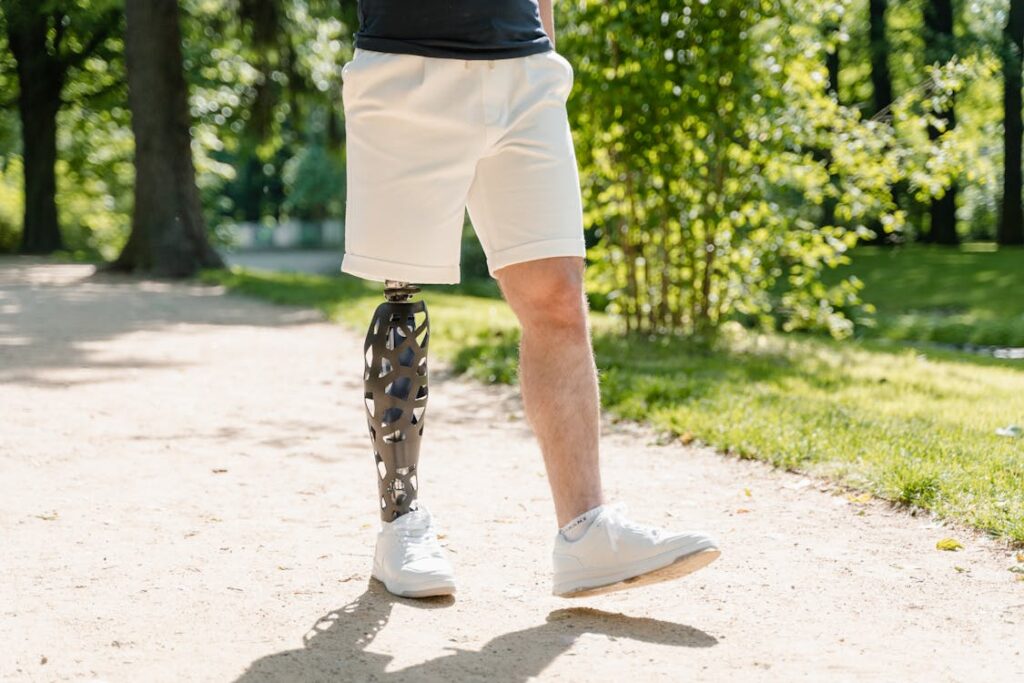
Common Roadblocks — and How to Overcome Them
Fear of Pain or Discomfort
Many patients worry that starting with a prosthesis too early will hurt. But when done under the right supervision, early fitting is gentle. The prosthesis is worn in short sessions at first. The socket is padded. The materials are chosen based on your skin condition and limb shape.
Yes, there may be some discomfort — but it’s manageable. And it’s far less painful than the complications of long-term immobility. You’ll have a team — prosthetist, therapist, and surgeon — monitoring every step.
At Robobionics, we believe in listening to your body. If it’s not ready, we wait. But if it is — even a little — we begin. And we go slowly, carefully, and respectfully.
Cost and Accessibility
Some people think early fitting is a luxury — that it’s only for the wealthy. But that’s changing. Many hospitals now partner with affordable prosthetic providers. Government schemes and NGOs cover parts of the cost. And more rural centers are opening each year.
Robobionics offers solutions at different price points — and we guide patients to financial support when needed. We also offer remote guidance for patients who can’t travel often.
The key is to ask early. Waiting only makes the path longer and harder.
How Robobionics Supports Your Early Return to Work and Life
Early Planning with Your Whole Rehab Team
From the moment you connect with Robobionics, we look at your full picture — not just your limb. We speak with your surgeon, physical therapist, and sometimes even your employer. We design a plan that suits your life, not just your body.
If your body is ready for a temporary prosthesis at week six, we start there. If it’s ready earlier or later, we adjust. Our fittings are personalized, adjustable, and made to grow with your recovery.
We also educate your family, guide your home routines, and offer post-fitting support. You’re never alone.
Solutions Tailored for Work and Daily Living
We understand the unique needs of Indian workers — whether you’re a tailor, teacher, driver, or shop owner. That’s why we build prosthetics that are:
- Durable in hot and humid climates
- Easy to clean
- Flexible for squatting or floor seating
- Lightweight for long wear
- Strong enough for walking on uneven roads
And as you return to work, we keep supporting you. If your limb changes shape, we refit. If your job changes, we adapt the design. Your prosthesis evolves with your journey — because your journey matters to us.
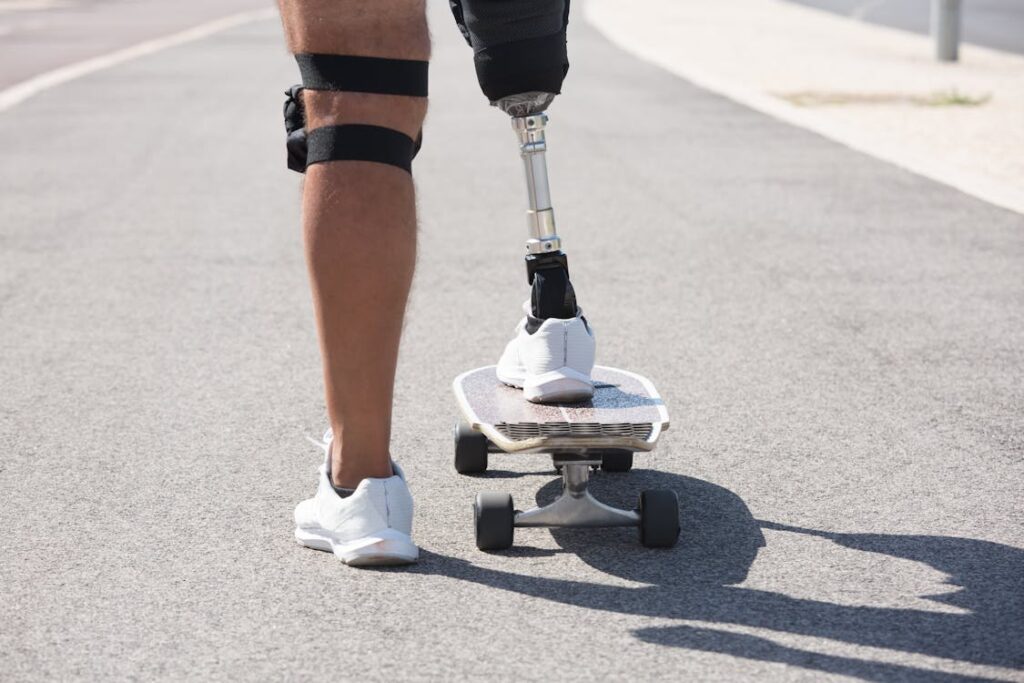
Social Reintegration: How Early Mobility Builds Social Confidence
Why Getting Out Matters Just as Much as Getting Up
When someone receives an amputation, the first thought is often about walking again. But once you’re walking, what happens next? You want to leave the house. See people. Go to the market. Visit a friend. Join a wedding. Return to society.
Early prosthetic fitting makes this possible — and easier — sooner.
Patients who begin walking early are far more likely to resume social activities without hesitation. This doesn’t mean they’re running marathons. It just means they’re able to step outside without fearing stares, slips, or setbacks.
They learn how to get in and out of rickshaws, navigate crowds, and even take public transport — because their body has had time to adjust, practice, and grow confident.
Staying home too long can cause something worse than physical stiffness — social isolation. The longer you avoid the world, the more it becomes unfamiliar. Friends stop visiting. Neighbours forget to check in. You start believing you don’t belong.
But when you walk out with strength — even with a cane or support — you break that cycle. You remind people, and yourself, that you are still part of the world. Early fitting helps build that bridge before isolation takes hold.
How Movement Reduces Shame and Builds Pride
Many amputees, especially in traditional or rural parts of India, feel shame about their condition. They fear being judged, pitied, or seen as less capable. This is especially true for women, who may also face stigma in marriage, family roles, and social expectations.
But here’s what we’ve seen at Robobionics: nothing removes shame faster than self-reliance.
When you move freely, take care of your own needs, and speak with confidence, people stop looking at your limb. They look at your spirit.
We’ve worked with women who returned to work in schools, banks, and even government offices — all because they didn’t wait too long to start walking. Their early prosthesis helped shape not just their gait, but their voice, their role, and their visibility.
When you move, you speak — even without words. You say: “I am still here. I am still me.”
Rebuilding Your Role in the Family
From Care Receiver to Contributor Again
After an amputation, many patients feel like they’ve become a burden. They rely on others for meals, bathing, dressing, and movement. This role reversal can be painful — especially for parents, elders, or caregivers who were used to being the strong ones.
Early prosthetic fitting helps shift this dynamic.
Even small wins like walking to the kitchen, fetching water, or folding clothes can restore dignity. When you start doing these things for yourself, you feel stronger. And when your family sees you taking charge of your own routine again, their stress eases too.
This isn’t just about physical recovery. It’s about reclaiming your place in the family — as a provider, a helper, and a pillar.
We’ve seen grandmothers use their prosthetic legs to cook for their grandchildren again. Fathers help kids with schoolwork. Mothers manage household budgets and attend weddings. These are not “small tasks.” They are acts of love, independence, and healing.
Early fitting gives you the power to return to those roles faster — and with pride.
Talking to Employers: Preparing for a Return to Work
Why You Shouldn’t Wait Until You’re Fully Recovered
Many patients think they need to be completely healed before speaking to their employer. But early communication helps you return more smoothly.
If you know you’ll be getting a prosthesis in the next few weeks, it’s okay to call your workplace and say:
“I’m recovering well, and I’ve started walking with a temporary prosthesis. I’d love to discuss a gradual return to work when the time is right.”
This does two things. First, it shows initiative. Second, it prepares your workplace to support you. They can start planning modified duties, accessibility support, or even work-from-home options.
When patients wait too long to speak up, they may return to a work environment that’s not ready for them. That leads to awkwardness, delay, or even rejection. But when you lead the conversation, you stay in control.
Some employers might be unsure at first — especially if they’ve never had an amputee return before. But if you’ve been using your prosthesis early and consistently, you’ll have the confidence — and physical ability — to reassure them.
Your progress becomes your pitch.
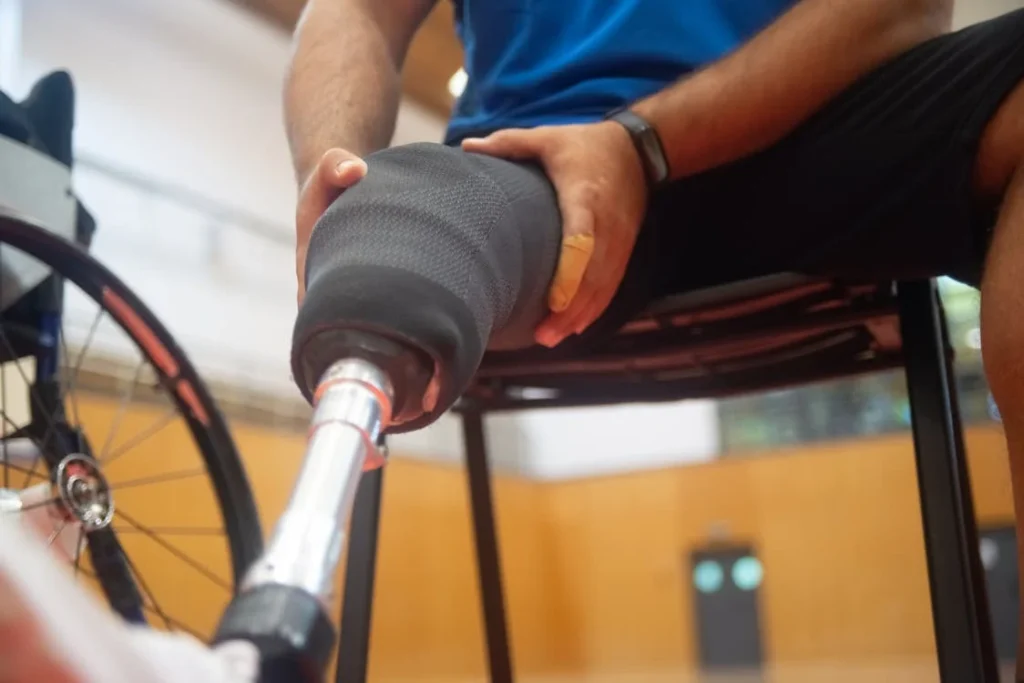
Mental Health: The Unseen Advantage of Early Mobility
Movement Fights Depression, Anxiety, and Fear
After limb loss, it’s not uncommon to feel low. You may experience sadness, irritability, or fear about the future. This isn’t weakness. It’s part of the trauma your mind and body are processing.
What makes it worse is staying still — physically and emotionally.
Patients who don’t move often spiral into deeper emotional distress. They lose motivation. They stop caring. They stop hoping.
But early prosthetic use interrupts that spiral.
When you move, you release hormones like serotonin and dopamine — natural mood boosters. When you walk independently, you feel capable. When you step outside, you remember the world still welcomes you.
That’s why therapists often say: “Motion is medicine.”
Your mind heals with your body — not after it.
At Robobionics, we often work alongside counselors and psychologists to support patients during early recovery. The results are clear: those who begin using a prosthesis early report fewer mood swings, higher motivation, and stronger relationships.
Mobility isn’t just about steps — it’s about outlook. Early fitting protects your mind while rebuilding your body.
Designing the Right Prosthesis for Your Work Life
Different Jobs Require Different Solutions
Returning to work doesn’t mean using a “one-size-fits-all” prosthesis. That’s why early fitting isn’t just about when — it’s also about how.
Robobionics designs prostheses for the work you actually do.
If you’re a shopkeeper, we make it easy for you to stand all day and move within a small space. If you’re a farmer, we focus on terrain and weather resistance.
If you’re in an office, we ensure comfort during long sitting hours and ease of restroom use. If you’re a teacher or police officer, we build for walking, presence, and impact.
The earlier we fit you, the more time we have to understand what your job demands — and how to meet it. We adjust based on how your limb changes. We tweak based on how your duties evolve. We make sure your prosthesis serves your role, not the other way around.
That’s the secret to long-term return to work: personalization with time.
Looking Beyond Work: Building a Life with Freedom
It’s Not Just About Income — It’s About Identity
Work is important. But life is more than work. Early prosthetic fitting also helps you return to what makes you feel alive — hobbies, relationships, travel, and contribution.
We’ve seen patients resume painting, singing, coaching sports, volunteering, and even dancing. One of our patients, 50-year-old Jaya from Pune, began using her prosthetic leg just 8 weeks after surgery. Today, she walks every morning, teaches yoga, and recently took her first flight in five years.
This isn’t just recovery. It’s reinvention.
And it starts with one early step.
When you fit a prosthesis early, you break the mental link between amputation and limitation. You stop seeing yourself as “someone who lost a leg” and start seeing yourself as “someone who walks, works, creates, and thrives.”
That shift is priceless — and it lasts a lifetime.
Conclusion
Early prosthetic fitting is not just a medical decision — it’s a life-changing one. It helps you get back on your feet, back to your routine, and back to being who you were — and even more than that. It allows you to work, care for your family, and live independently with dignity.
At Robobionics, we’ve seen again and again how those who start early recover faster, walk stronger, and return to work sooner. We believe every patient deserves that chance — not just to survive after amputation, but to thrive.
If you or someone you love is facing this journey, know that the first step doesn’t start with walking. It starts with asking: “How soon can we begin?”
We’re ready when you are.



